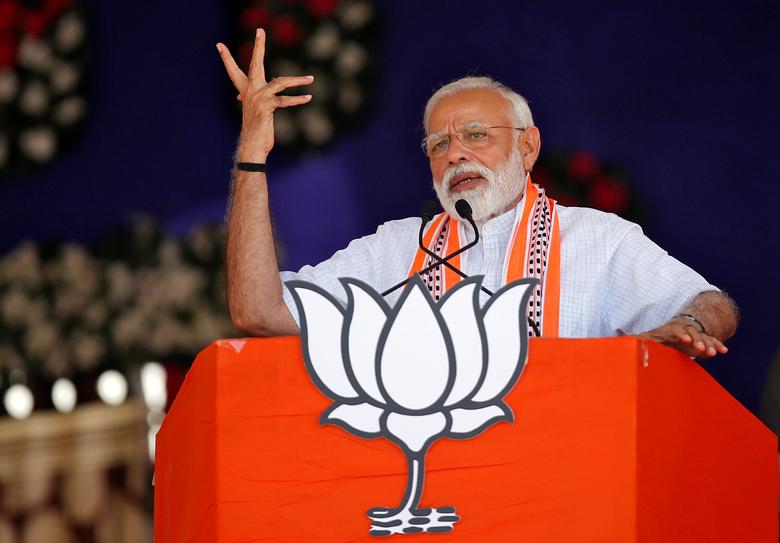
Gandhi was from the Indian state of Gujarat. So is Narendra Modi, who also served as the state’s chief minister for more than a decade. There is little else in common between the two; whereas Gandhi sought to bring universalism into Hinduism, Modi is a strong believer in exclusivism. According to him India is a Hindu nation; all other religious communities in the country are to be treated as a secondary class. This principle he has applied in particular to the followers of the Islamic faith. This way of looking at India and Indian nationalism resulted in the adoption in 2019 of the Citizenship Act, according to which Muslims were barred from being considered Indians unless they could establish their Indian entity. This restriction did not apply to those who followed other religions.
Another move by the Modi government related to the status of Kashmir, the only Muslim-majority state in the country. Article 370 of the Indian Constitution granted Kashmir a degree of autonomy. It had its own parliament that could make laws for the state. What was important for preserving its religious status was that non-Kashmiris could not acquire immovable property in the area. This provision meant that Kashmir could avoid the fate of Palestine where the area’s Arab residents were given attractive prices for their land and houses by the Jews who moved in from Europe and the United States. This made it possible for the Jewish population to own most of the immovable property in Palestine. This led to a profound demographic change in Palestine and it became the Jewish state of Israel.
The change in the legal status of Kashmir led to the renewal of violence in the state with the nationalists battling beefed-up Indian military presence in the area. The lockdown ordered in India by the Modi regime to contain the spread of Covid-19 had an impact on Kashmir, worsening the situation. According to a New York Times report, the lockdown “plunged Kashmir into fresh turmoil. Police officers blocked roads with coils of glistening concertina wire. Shops closed once again, and thousands of Kashmiris lost their jobs.” At least 50 militants and 20 soldiers have been killed in 2020, according to data collected by the South Asia Terrorism Portal, a research project that tracks conflict. The Indians revealed that a firefight on May 3 between their security forces and those who resist India’s moves resulted in seven deaths, five from the security forces, including a colonel, a major and a Kashmiri police officer. Kashmir, once again, is a problem for India.
There is a difference this time around. The Kashmiri population is restive not because it is being encouraged to become that way by Pakistan but because it is reacting to the rise of Hinduism in India. Modi and his associates — in particular Amit Shah, his powerful Home Minister — have made no secret of their dislike of Islam and of the people who follow that religion. Shah has called Muslims termites who are eating away India. Shah is not the only person close to Modi who thinks that way. The Prime Minister has appointed Yogi Aditynath Chief Minister of Uttar Pradesh, the largest Indian state in which Muslims have a large presence. Adityanath is not only a politician but a Hindu priest. He is a mahant, or head priest of the Gorakhnath, a Hindu temple, a position he has held since the death of his spiritual father, Mahant Avaidyanath. He is also the founder of Hindu Yuva Vahini, an extremist organisation. He is busy removing Muslims symbols from his state; has changed the names of buildings, roads and cities that were named after Muslims. At one time he suggested that if he had his way the Taj Mahal would be called Ram Mahal. It is not surprising that the Kashmir uprising now is inspired by a very different set of circumstances.
The Kashmir population is now into its third generation since the state’s Hindu maharaja took the fateful decision to accede to India in spite of the fact that the move defied the logic on which the British had agreed to partition their Indian colony: into a predominantly Hindu India and a mostly Muslim Pakistan. Kashmir, a majority Muslim state, was governed by a Hindu ruler. The British were obviously in favour of Kashmir going to India: the boundary line they drew between the Indian and Pakistani provinces of Punjab gave a Muslim district to India in order to provide the state access to India. When the ruler decided to accede to India, the state was dominated by political leadership that was more secular in disposition than those who governed Pakistan. That changed when a new generation took the place of those who were comfortable with secular India.
By mid-1970s and early 1980s, Islamic nationalism had begun to attract the youth. Helped by their cohorts across the border in Pakistan, this generation of Kashmiris became deeply resentful of the way New Delhi was trying to keep its control over their state. The third generation gained political maturity when the youth in the Middle East launched what came to be called the Arab Spring of 2011. The political activism associated with this movement removed from office a number of long-enduring leaders in their part of the world. The movement was also behind the beginning of several civil wars that are still grinding on. If New Delhi believes that in this charged atmosphere in the Muslim world it can impose Hindutva in a place like Kashmir, it has not studied the history of social movements.
Published in The Express Tribune, May 11th, 2020.
Like Opinion & Editorial on Facebook, follow @ETOpEd on Twitter to receive all updates on all our daily pieces.







































COMMENTS
Comments are moderated and generally will be posted if they are on-topic and not abusive.
For more information, please see our Comments FAQ